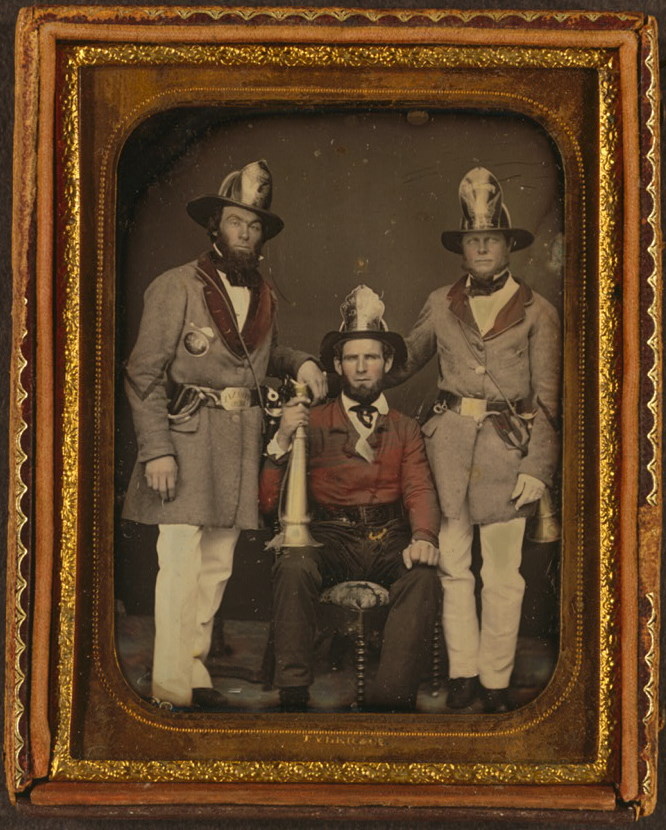Sign up for the Family Tree Newsletter! Plus, you’ll receive our 10 Essential Genealogy Research Forms PDF as a special thank you.
Get Your Free Genealogy Forms
"*" indicates required fields
These tinted enhancements range from delicately shaded pink lips and gold jewelry to elaborate coloring that obscures the image and transforms a photograph into a painting.
Powders, paints, crayons and pastels were all used to make photographs look more lifelike. Some photographers hired artists to apply the color, while others attempted to do the job themselves. The final results were mixed based on the skill of the person laying down the color.
The history of photography is full of examples of hand-colored images from the early daguerreotype period to the digitally colored images of today.
Here’s an example from the Library of Congress. It’s three men from the Phoenix Fire Company and Mechanic Fire Company of Charleston, SC. Isn’t it beautiful? The photographer tinted their jackets, but the red color most attracts the eye.
It was taken c. 1855 by Tyler & Co. Additional information on Tyler can be found in Craig’s Daguerreian Registry.
In John Comstock’s A System of Natural Philosphy (1852), there are details about how this tint might’ve been added and a bit of background on coloring in general:
Coloring daguerreotype pictures is an American invention, and has been considered a secret, though at the present time it is done with more or less success by most artists.
The color consists of the oxyds of several metals, ground to an impalpable powder. They are laid on in a dry state, with soft camel-hair pencils, after the process of gilding. The plate is then heated by which they are fixed. This is a very delicate part of the art, and should not be undertaken by those who have not a good eye, and a light hand.
Comstock received these details from a Mr. N.G. Burgess of 192 Broadway, NY, and claimed that “he was an experienced and expert artist in this line.” Nathan Burgess also is in Craig’s Daguerreian Registry. It appears he was one of the earliest daguerreotypists in this country.
Note: If you were looking at the original of this image, you’d have to view the image at an angle. This is a key characteristic of a daguerreotype. They were also reversed.
If you have a hand-colored image you’d like to share, see the photo submission guidelines.





